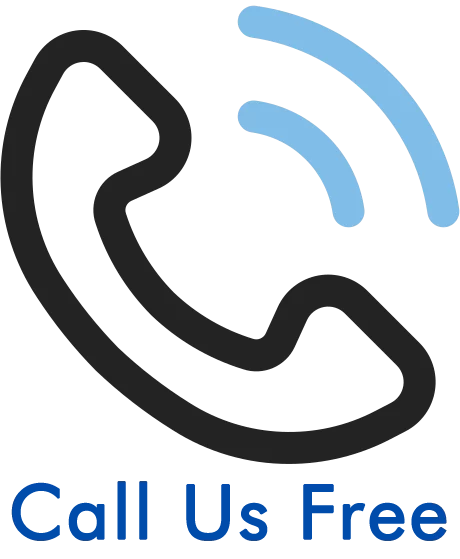Ulna Fracture Compensation Claims In The UK
Have you been involved in an accident caused by the negligence of someone who owed you a duty of care? Did you fracture your ulna as a result? If so, you may be eligible to make an ulna fracture compensation claim.
Ulna fracture compensation
We use our arms and wrists every day to complete ordinary tasks, such as opening doors and getting dressed. When you suffer a broken ulna bone, it can leave you unable to complete these tasks. Furthermore, you may need to take time off work, resulting in a loss of earnings.
Broken And Fractured Ulna Compensation Claims
If you can prove that your broken ulna was caused by the negligence of someone who had a duty of care to ensure your safety, then you may be owed compensation. This could be the case whether you’ve been injured at work, in public or while on the road.
Furthermore, you may have suffered that has been made worse because a medical professional acted negligently. If you can show that their negligence caused you to suffer more than you would have if you’d received the right treatment, you may be able to claim.
Get In Touch With Our Team
You can get in touch with our friendly team of advisers today. They’ll be happy to have a chat with you about your situation and assess how much ulna fracture compensation you could be entitled to.
If you have a valid case, they may be able to connect you with our expert panel of personal injury solicitors to begin your personal injury claim. To contact our claims team, you can:
- Call them on 020 3870 4868.
- Chat with one of our advisers via our live chat pop-up box to the bottom right of this screen.
- Fill in our online claims form for a response at your earliest convenience.
Services And Information
- Everything You Need To Know About Ulna Fracture Compensation Claims
- What Is A Broken Ulna?
- What Are The Parts Of The Ulna?
- How Do I Know If My Ulna Is Fractured?
- What Causes Broken Forearm Bones?
- Ulna Fracture Compensation Payout Calculator
- How Is A Fractured Ulna Treated?
- What Is A Missed Ulna Fracture?
- How Does An Undiagnosed Fracture Happen?
- How Long After The Accident Are You Eligible To Claim?
- What Happens If You Want To Claim Compensation?
- No Win No Fee Ulna Fracture Compensation Claims
- Guides Related To This Article
- Broken Arm And Wrist FAQs
Everything You Need To Know About Ulna Fracture Compensation Claims
First, this article will discuss what a broken ulna is and the parts of the ulna. We will look at how you might know if your ulna is fractured. We’ll also look at the kinds of accidents that might result in fractured forearm bones.
Furthermore, we will look at the compensation that could be awarded for an ulna fracture settlement. We’ll examine what damages a typical claim for ulna fracture compensation might consist of and how these are calculated.
We will go on to look at what treatment you can expect to receive following an ulna fracture and how the medical professional treating you could act negligently. This guide will then examine how to claim compensation if your condition has been made worse because the care you received fell below an acceptable standard.
If you would like to make a personal injury claim, there’ll be a section exploring the steps you can take after suffering your injury to strengthen your claim for compensation. After this, we will look at No Win No Fee agreements and how they may be able to help you fund legal representation.
To conclude, there’ll be some related guides regarding fractures. We’ll also include a section in which we answer some commonly asked questions about claims of this nature.
What Is A Broken Ulna?
A broken ulna is essentially a broken forearm or wrist. This can be caused by an accident at work, a public place accident, or a car accident. Recovery for a broken wrist or forearm usually takes around 6-8 weeks, but sometimes longer if the fracture is severe.
There are a number of different ways your ulna can be broken that might affect the impact it has on your quality of life and the amount of pain and suffering you experience. For instance, sometimes, a fractured bone may be displaced, meaning that the bones have moved out of alignment in the body. This kind of fracture might require surgery in order to be treated. In contrast, a non-displaced fracture where the bones are still in position may only require immobilisation to heal.
Similarly, you may suffer from a displaced fracture where part of the broken bone has pierced the skin. This can be referred to as an “open” fracture and requires immediate medical attention. This is because the open wound poses a greater risk of infection than a closed fracture in which the skin is not broken.
The graph below illustrates the number of non-fatal injuries to employees that were reported to RIDDOR in Great Britain by the site of injury in 2019/20. As we can see, there were 4,464 injuries of this nature reported in this time period. However, it’s important to note that not all of these injuries have resulted from negligence, meaning not all of them would be grounds for a claim.
Ulna fracture statistics graph
What Are The Parts Of The Ulna?
The forearm is made up of two bones called the ulna and the radius. The ulna extends from the top of the forearm to the little finger. The ulna is more prominent at the top end of the forearm, whereas the radius is bigger at the wrist and thumb. In adults, a broken ulna and radius can occur together.
Adults may break both bones in unison if the fracture is caused by a strong impact. However, you may experience a fracture in the ulna without the radius being broken, or vice versa.
You may fracture your ulna if you experience a severe blow to it, like in a car accident. However, you could also suffer a broken ulna if you fall on your arm in a slip, trip or fall accident.
How Do I Know If My Ulna Is Fractured?
When using our forearms, we should be able to turn our palms up and down. This is possible because the ulna stays still whilst the radius moves around it. However, a fractured forearm limits the ability of the radius to rotate around the ulna in this way. You may also find it difficult to straighten and bend your elbow and wrist.
If you’ve broken your ulna, you may notice:
- Severe pain that increases as you move your arm
- Swelling
- Bruising
- That your arm or wrist is bent at an odd angle
If you experience any of these symptoms, you should seek medical attention immediately. Leaving a fracture untreated could result in the bones starting to heal in the wrong place. This could cause you issues further down the line and may restrict your range of motion long term.
What Causes Broken Forearm Bones?
There are a number of ways that you might break your ulna as the result of someone else’s negligence. These include:
- Falls from a height: Falling onto an outstretched hand can cause a high-impact injury to occur to the wrist and arm. You may fall from a height in your workplace because you were supplied with faulty equipment like a ladder, leading to you falling and breaking your ulna.
- Slips, trips, and falls: This type of accident can cause an ulna fracture as someone can slip and fall onto their arm, wrist, elbow, or hand at high impact. A slip or fall causing a fractured ulna may occur because you were in public and slipped on a spill that was not cleaned up or signposted in a reasonable timeframe.
- Road traffic accident: If you’ve been involved in a car accident on the road, the force of the impact on your forearm could fracture your ulna. For instance, someone else may have attempted to overtake you when it wasn’t safe to do, causing them to crash into the driver’s side of your car.
If you’ve suffered a broken ulna that was caused by someone else breaching their duty of care to you, you may be able to claim ulna fracture compensation. You can get in touch with our friendly team of advisers today for free legal advice.
Ulna Fracture Compensation Payout Calculator
You may find a personal injury claims calculator in some tables. However, as each case is unique, we don’t think that would provide an accurate figure in this circumstance.
Instead, we’ve gathered the latest figures from the Judicial College Guidelines to portray how much compensation some injuries could be valued at. Please note that these compensation amounts are guidelines only, and the amount you receive may differ.
| Injury: | Severity: | Notes: | Compensation: |
|---|---|---|---|
| Arm Injuries | Resulting in permanent and substantial disablement | Severe forearm fracture resulting in permanent disability. | £36,770 to £56,180 |
| Arm Injuries | Simple fractures of the forearm | £6,190 to £18,020 | |
| Injuries to the Elbow | A severely disabling injury | £36,770 to £51,460 | |
| Injuries to the Elbow | Moderate or minor injury | Simple fractures of the elbow the don’t cause any permanent damage or impairment of function. | Up to £11,820 |
| Wrist Injuries (d) | Fracture where the recovery was lengthy but is complete. | Rarely exceed £9,620 | |
| Wrist Injuries (e) | Simple Colles’ fracture. | In the region of £6,970 |
There are two heads of claim that your compensation settlement may consist of. These are known as general and special damages. General damages award compensation for the injury itself and the way it’s affected you physically and emotionally. They are based on how severe the injury is and how long your recovery takes.
Special damages compensate you for the financial impact the injury has had on you. For example, suffering a loss of earnings due to taking time off work or having to pay for transport to get to and from medical appointments.
You will not be able to claim special damages if you don’t provide evidence of the financial loss. For example, you could provide payslips to prove you suffered a loss of earnings or receipts to show that you had to pay for medication.
How Is A Fractured Ulna Treated?
When you fracture your ulna, the treatment you need will vary depending on the kind of fracture you’ve sustained. For instance, if the fracture is displaced, then the doctor may need to move the bones back into place before they are ready to heal. This is called reduction, and you will usually be given painkillers while it happens.
After the bones are put back into position, they’ll need to be immobilised. This can be done in a number of ways, including:
- A cast. This is a protective covering that is solid and hard. It completely covers the injured area so it doesn’t move and become damaged further. Casts are usually made from plaster and tend to be used when a fracture needs to heal for a longer period of time.
- A splint. This protects the affected area but doesn’t completely cover it like a cast. This may be used if the bones need to heal for a shorter time or if there’s swelling. If the area is swollen, the splint may be used until this goes down and a cast can be fitted.
- A sling. These are used to support your arm and limit movement. They’re made of soft material and are worn around the shoulder to protect the arm.
While your ulna fracture is healing, you will probably find it more difficult to use your arm and, as a result, carry out some of the daily tasks you’re usually able to do. If this is the case, you may be able to claim compensation for the pain and inconvenience caused. Get in touch with our team today for more information.
What Is A Missed Ulna Fracture?
When you break your ulna and seek medical attention from a hospital, you may find that the level of care you receive falls below the standard expected. If this substandard care resulted in you experiencing more pain and suffering than you otherwise would have, this could be an example of medical negligence.
If your doctor fails to recognise a fractured ulna and, as a result, doesn’t provide the correct treatment for it, then you may be able to claim. However, it’s important to note that not all instances of missed diagnosis will be an example of negligence. To determine whether or not a doctor can be considered negligent, the courts will administer something called the Bolam test.
In the Bolam test, a panel of the doctors’ peers will be asked if they would have acted in the same way as the doctor in question when presented with the same information. If they confirm that they would have, then the doctor would not be considered negligent even if they missed a diagnosis.
If the Bolam test reveals that a panel of peers would have acted differently, however, then this would indicate medical negligence. In this instance, you may be able to claim.
How Does An Undiagnosed Fracture Happen?
There are a number of reasons that an ulna fracture might be misdiagnosed. These include:
- Failing to order the correct scans or tests. A doctor may neglect to order an X-ray because they failed to recognise the symptoms of a broken ulna.
- Misreading or misinterpreting the result of tests. A doctor might read the results of a test wrong, meaning that they fail to notice a fracture that has been identified.
- Administrative errors. In some cases, the test results that indicate you’re suffering from a fracture may get mislaid or lost.
Misdiagnosing a fracture can cause the arm to heal in the wrong position. Consequently, you may have to have an operation to move the bones back to their original place.
If you can show that your doctor was negligent and that their negligence caused you to suffer more than you would have if your injury was correctly diagnosed, you may be able to claim. Get in touch with our claims team to find out more.
How Long After The Accident Are You Eligible To Claim?
The general personal injury claims time limit is three years. This three-year time limit runs from the date of the accident or the “date of knowledge”. The date of knowledge is the date when you knew (or should have known) that your injuries were caused by negligence.
However, there are some exceptions to this time limit, which we have included below:
- If you lack the mental capacity to make a personal injury claim, a litigation friend can claim on your behalf. While you lack the capacity to claim, the time limit is suspended. If you recover the mental capacity to claim, the time limit starts again; otherwise, it’s suspended indefinitely.
- Child accident claims: If you’re under 18, the three-year personal injury claims time limit begins on your 18th birthday. Before this, someone can become a litigation friend to make the claim for you. The compensation money will then be deposited into a secured bank account that you can access when you turn 18.
If you’d like more information about how long you have left to make a claim, you can contact our team of advisers today to discuss your situation. They’ll be happy to offer you free legal advice on the time limits associated with your claim.
What Happens If You Want To Claim Compensation?
If you’ve suffered a broken ulna injury, the first thing you should do is seek medical attention and advice. This is imperative in ensuring you receive the right treatment for your injury. Furthermore, you can use your medical report as evidence if you make a personal injury claim.
Your medical report will include details about the severity of your injury, the length of your treatment, and how you sustained your injuries. Moreover, you should provide evidence to prove you weren’t at fault for the accident that caused your injuries.
Additionally, you should gather as much evidence as possible to prove you suffered financially due to your injuries. Keep hold of any receipts, bills and invoices of any costs you’ve incurred to support your claim.
Finally, it’s recommended that you seek the help of a personal injury lawyer. While not a legal requirement, a personal injury solicitor can offer you support and guidance throughout the claims process.
To speak to someone today about your claim, get in touch with our team. They’ll be happy to offer you free legal advice. If they feel your claim has a good chance of success, they may be able to pass you to a lawyer from our panel.
No Win No Fee Ulna Fracture Compensation Claims
You may have heard the phrase “No Win No Fee” before, but be unsure as to what it means. A No Win No Fee agreement is a contract between you and your solicitor stating the terms that they need to meet before getting paid.
You won’t be asked to pay anything in order for your solicitor to start working on your claim or while it’s ongoing. If your case fails, you don’t have to pay any of your solicitor’s fees. If your case succeeds, your solicitor will deduct a small, legally capped percentage of your compensation. This percentage will be agreed with you beforehand.
You can contact our team of advisers today by:
- Calling our team of advisers on 020 3870 4868. They will be happy to chat with you about your situation.
- Filling in our online claims form to receive a response whenever is best for you.
- Chatting with an adviser via our live chat pop-up box for an immediate response.
Guides Related To This Article
Forearm Fracture Compensation Claims In The UK – If you need more advice about forearm fractures, our guide has detailed sections discussing this type of fracture.
Skull Fracture Compensation Claims In The UK – If you’ve suffered a skull fracture, our article explores how to make a personal injury claim for compensation.
Shoulder Fracture Compensation Claims In The UK – Have you suffered a broken shoulder injury? Our guide gives you information regarding how to gain compensation.
How Do I Know If I’ve Broken A Bone? – If you suspect you may have sustained a broken bone injury, this NHS article guides you through the signs, treatment, and recovery for a bone fracture.
Statutory Sick Pay (SSP)- This government page outlines what you could receive in SSP for the time taken off work.
Health and Safety at Work etc. Act 1974- This piece of legislation outlines what your employer is expected to do to keep you safe in work.
Broken Arm And Wrist FAQs
Will a fractured ulna heal on its own?
If you don’t receive the correct treatment, the bones could heal in the wrong place and the wrong way. This may require surgery to move them back to their original place. For this reason, it’s essential that you get medical attention as soon as possible for a fractured ulna.
How do you know if your ulna is broken?
If your ulna is broken, you may experience these symptoms:
- Severe pain
- Inability to move the arm
- Swelling
- Bruising
- Visible bone (f the fracture has pierced the skin)
Do ulna fractures hurt?
You are likely to experience pain and discomfort if you suffer an ulna fracture. You may be prescribed painkillers while you recover.
Could you claim compensation for a child?
If someone is under 18 and suffers an injury that was caused by a breach of duty of care, you can become a litigation friend to claim on behalf of them. When they turn 18, they have 3 years to make their own claim.
Thank you for reading our guide about claiming ulna fracture compensation.
Guide by HL
Checked by NC








